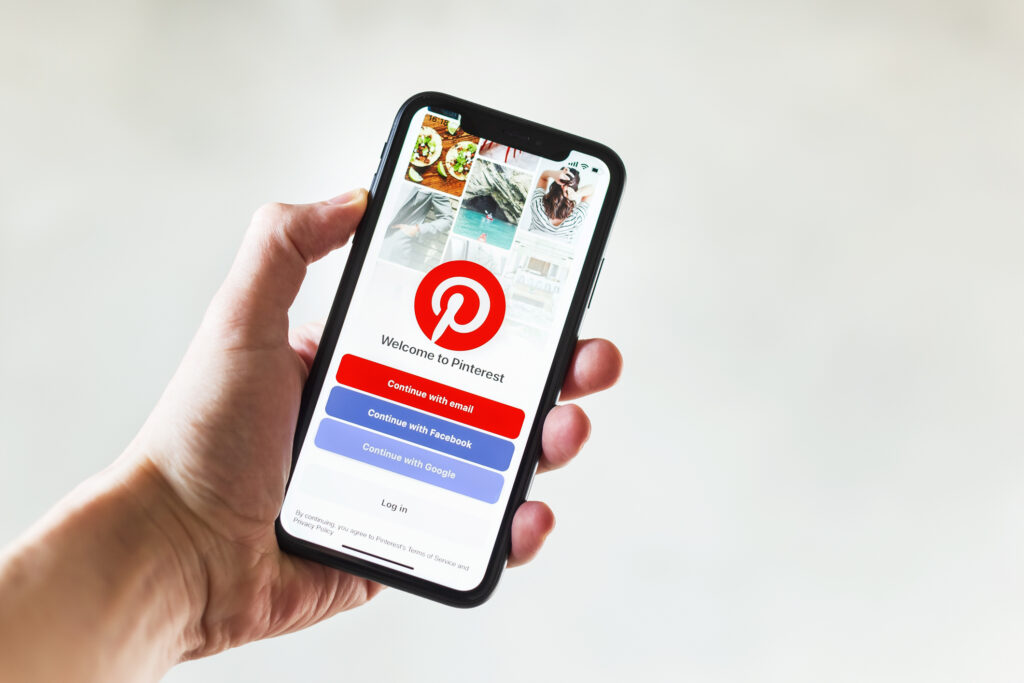In the ever-expanding world of social media, Pinterest has emerged as a unique platform blending visual discovery with e-commerce potential. It’s not just for DIY enthusiasts and recipe hunters anymore; it’s a goldmine for affiliate marketers. This guide delves into the realm of Pinterest Affiliate Marketing, a path less traversed but brimming with opportunities to earn income through pinning.
Understanding Pinterest’s Landscape
Before diving into affiliate marketing, it’s crucial to understand what sets Pinterest apart. It’s a visual search engine where users discover new ideas, products, and inspirations. The platform’s user base is diverse, covering a wide range of interests, making it fertile ground for affiliate marketing across various niches.
Setting Up Your Pinterest Profile
Your journey begins with setting up a Pinterest business account. This allows access to analytics, which is essential for tracking your affiliate marketing success. Ensure your profile clearly represents your niche and brand. A well-curated profile with organized boards creates a more engaging experience for followers.
Choosing the Right Affiliate Programs
Success in Pinterest affiliate marketing hinges on promoting products that resonate with your audience. Join affiliate programs that align with your niche. Look for products that you genuinely endorse, as authenticity drives engagement and sales.
Creating Compelling Pins
The heart of Pinterest is its Pins. Create eye-catching, high-quality images that stand out. Use tools like Canva or Adobe Spark for designing. Your pin descriptions should be keyword-rich, making them easily discoverable. Always include a clear call-to-action and your affiliate link.
Strategies for Maximizing Engagement
SEO Optimization: Utilize Pinterest’s search engine potential by researching and including relevant keywords in your pin descriptions and board titles.
Consistent Pinning: Regular pinning keeps your content fresh and increases visibility. Use scheduling tools like Tailwind to maintain a consistent pinning schedule.
Leveraging Rich Pins: Utilize Rich Pins, which provide more context about an idea because they show extra information directly on a Pin.
Engaging with the Community: Like, comment, and repin content from other users to build a community and increase your profile’s visibility.
Monitoring Performance and Adapting Strategies
Analytics are your best friend in affiliate marketing. Monitor which pins and boards are driving the most traffic and sales. This insight helps you refine your strategy and focus on what works.
Staying Compliant and Ethical
It’s crucial to disclose affiliate relationships to your audience. Transparency builds trust. Ensure that your pins comply with both Pinterest’s guidelines and FTC regulations regarding affiliate marketing.
Pinterest offers a unique platform for affiliate marketers, blending visual appeal with a strong user intent to purchase. By understanding the platform, choosing the right products, creating compelling content, and engaging with the community, you can turn your pins into a profitable venture. Remember, consistency and authenticity are key. Start pinning, and let your creative and strategic efforts lead you to success in the world of Pinterest affiliate marketing.
Expanding Your Reach
As you grow in Pinterest affiliate marketing, consider collaborating with other pinners or influencers in your niche. This can broaden your reach and introduce your content to a new audience. Participating in group boards is also an effective way to get your pins seen by more people.
Utilizing Pinterest Ads
To further amplify your reach, you might want to explore Pinterest Ads. Promoted Pins can help you target a specific audience, increasing the visibility of your affiliate products. This approach requires investment, but it can yield significant returns if executed well.
Leveraging Seasonal Trends
Pinterest users often search for seasonal content, such as holiday gift ideas, summer fashion, or Halloween decorations. Capitalizing on these trends can drive significant traffic to your pins. Plan your content calendar around these seasons to maximize engagement.
Building an Email List
Don’t just rely on Pinterest for traffic. Use it as a tool to build your email list. Include calls-to-action in your pins and pin descriptions encouraging users to sign up for more exclusive content or offers via email. This diversification can help stabilize your income.
Diversifying Your Affiliate Marketing Strategy
While Pinterest can be a lucrative platform, don’t put all your eggs in one basket. Diversify your affiliate marketing strategy across different platforms. Integrating your Pinterest efforts with a blog, YouTube channel, or other social media platforms can enhance your overall performance.
Continuously Learning and Adapting
The digital landscape, particularly social media and affiliate marketing, is always evolving. Stay informed about Pinterest’s algorithm updates and adjust your strategies accordingly. Also, keep an eye on emerging trends and adapt your content to stay relevant.
Pinterest affiliate marketing is a journey that combines creativity, strategy, and persistence. With the right approach, it can transform your passion into a profitable business. Be patient, as building a following and gaining traction takes time. Stay committed, keep experimenting, and watch as your efforts pay off in the exciting world of Pinterest.
Frequently Asked Questions (FAQs) about Pinterest Affiliate Marketing
Can I use affiliate links directly on Pinterest?
Yes, you can use affiliate links directly in your pins. Pinterest reversed its previous ban on affiliate links, allowing users to include them in their pins. However, always ensure that your use of affiliate links is compliant with Pinterest’s guidelines and the terms of your affiliate programs.
How do I find affiliate programs to join?
You can find affiliate programs by joining affiliate networks like ShareASale, Commission Junction, or Amazon Associates. Additionally, search for companies in your niche that offer affiliate programs. Many brands have an affiliate program section on their websites.
How often should I pin?
Consistency is key on Pinterest. It’s recommended to pin at least once a day, but the more you can pin (within reason and without spamming), the better your results are likely to be. Using scheduling tools can help maintain a consistent pinning routine.
Do I need a large following to be successful in Pinterest affiliate marketing?
A large following can help, but it’s not necessary to be successful. Engagement and the quality of your pins are more important. Focus on creating compelling, high-quality content and engaging with your audience. Over time, your following will grow.
How do I ensure my pins stand out?
Use high-quality, visually appealing images and ensure your pin design is clean and attention-grabbing. Incorporate text overlays on your images to make your message clear. Make sure your pins are optimized for both desktop and mobile viewing.
Is it necessary to disclose affiliate links?
Yes, it’s both ethical and legally required to disclose affiliate links to your audience. You can do this by adding a simple disclaimer in your pin description, such as “#Affiliate” or “This post contains affiliate links.”
How long does it take to start earning money through Pinterest affiliate marketing?
It varies greatly depending on your niche, the products you’re promoting, and how effectively you’re marketing them. Some may start seeing earnings within a few months, while for others, it might take longer. Patience and consistent effort are key.
Should I focus on a specific niche?
Yes, focusing on a specific niche helps in building a targeted audience and establishing yourself as an authority in that area. This specificity can lead to higher engagement and conversion rates.
Can I use Pinterest affiliate marketing if I don’t have my own products?
Absolutely! Affiliate marketing is all about promoting other people’s products. You don’t need to have your own products; instead, you’ll earn commissions by promoting products you love and believe in.
How do I track the success of my affiliate marketing efforts on Pinterest?
Use Pinterest Analytics to track the performance of your pins and affiliate links. You can see metrics like impressions, clicks, and repins to understand how your content is performing. Additionally, most affiliate programs provide their own analytics for tracking sales and commissions.






